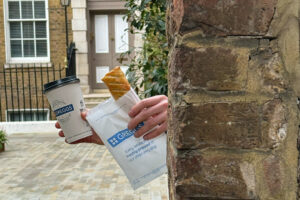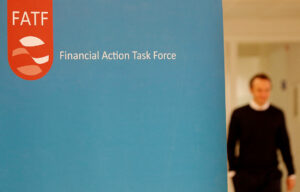On Michelin stars, food awards, and fast food
By Howard Chua-Eoan
WHEN you can pay for any number of famous chefs to cater your economy-shaking concert tour, but you choose a takeout chain instead…
Taylor Swift’s decision to pick Greggs — the United Kingdom’s (UK) beloved bakery-turned-takeaway franchise — to feed her team after a gig in Edinburgh last week set me thinking about the nature of eating out. Not that I need much of an excuse — I rarely eat at home. The timing was provocative: Several prominent events ranking the best restaurants in the UK, US, and around the world happened recently. Greggs — with 2,500 branches (as well as food trucks) across the country — wasn’t among the nominees.
The ones that were say more about the politics of these lists than the cuisine.
At ceremonies in Las Vegas last week, Barcelona’s Disfrutar came out on top of the World’s 50 Best Restaurants, an annual, highly competitive roster with undertones of patriotism and regionalism in its celebration of global cuisine. Indeed, four other Spanish restaurants were on the list: Asador Etxebarri, outside Bilbao (No. 2), Diverxo in Madrid (No. 4), Quique Dacosta, down the coast from Valencia (No. 14), and Elkano on the Basque coast (No. 28). Two British restaurants — both in London — made the cut: Kol in Marylebone (No. 17) and Ikoyi, on the Strand (No. 42).
Only two American entries were in the 50: Single Thread in Healdsburg, California (No. 46), and Atomix in my hometown across the Atlantic, New York (No. 6). The entire US was matched by Hong Kong, which had Wing (No. 20) and The Chairman (No. 26), and outclassed by Mexico City (with three restaurants), Lima (three), Bangkok (three), and Paris (four).
This doesn’t mean the rest of the UK and US culinary scene is mediocre. The World’s 50 Best lends itself to these kinds of parochial perspectives because restaurants are contained within borders — and thus have native-born cheering sections. (Most who vote for these awards are chefs, restaurant owners, and food writers, who, of course, have parochial interests.) Out of these come collaborative efforts to promote compatriots in your-turn-this-year, my-turn-next campaigns. For many, national representation — which benefits tourism and local business — is almost as important as culinary innovation. British and American restaurants haven’t quite figured out how to hang together to game the system.
Culinary politics is different within the UK and US. On Monday, Britain’s National Restaurant Awards put out its annual ranking of the UK’s top 100 — 48 were in London, including Ikoyi (No. 10) and Kol (No. 49), also in the World’s 50 Best. The NRA (an unfortunate echo of a more notorious non-culinary organization) consciously makes forays beyond the capital’s gravitational pull, but the sheer size and convenience of the metropolis keeps its restaurants not just in the top ranks but dominating the entire list. This year, the Ledbury in London took over the top spot from Ynyshir, the Welsh wonder that held the first position for two years in a row.
In the US, James Beard Awards’ solution to what would have been the predominance of the strongholds of New York, Chicago, and San Francisco is twofold: One is to actively nominate smaller restaurants outside of the big cities to the most prestigious national awards and to recognize the top kitchens in 12 regions (from states like California, Texas, and New York to regional agglomerations like the Midwest, South and so on). It’s a heartwarming judiciousness but also results in the impression that the US has no real culinary center of gravity.
One other thing: A vibrant industry of public relations consultants fuels the overt and subtle campaigns of contenders in the World’s 50 Best, the National Restaurant Awards, and, to a lesser extent, the Beard Foundation honors. When I attend these galas, I’m often confused whether I’m meeting a chef or someone managing his or her PR. You must maneuver through lots of cogs in this machinery of influence before you get to eat.
As a foodie, I like to root for my favorite chefs and restaurants. As a local in both London in New York, I cheered for my friend Adejoke Bakare when her Fitzrovia restaurant Chishuru came in 31st and she got the chef of the year award. And I celebrated the news that Charlie Mitchell of Clover Hill in Brooklyn got the Beard’s best chef in New York State prize. But you must remember that these rankings should not dictate what you enjoy. You can still have a terrible time in the world’s best restaurant.
I’m not averse to tasting menus, but many prominent critics lately have opposed them — especially the massive multi-hour extravaganzas of small snacks that move the diner through specialized rooms, billing themselves as “culinary experiences.” I guess you’d feel that way if you had to write weekly restaurant reviews. Not every meal has to be the equivalent of Lawrence of Arabia. Some things should be experienced only once or twice a year — or in a lifetime.
Happiness doesn’t have to come with Michelin stars. The most memorable plate I had last week was a tagliarini with red mullet and olives, produced over a single induction burner at the back of a tiny kitchen of a wine bar, in London’s decidedly mixed-income Lower Clapton. Delicate and complex, I will remember its joys for a long time.
And then there’s Greggs.
I’m an admitted food snob, and my first venture into an outpost of the Newcastle upon Tyne-based pastry kingdom didn’t impress. The share of poultry in the chicken nuggets was paltry — and the grease-to-batter ratio was high. The cheese-and-onion pie demanded more flavorful cheese. And onions. I picked up an orange on the way back to work to cleanse my palate, puzzling over the company’s market cap of more than $3.6 billion and nearly 30% return on equity.
But the other day, I was walking the streets furious about something petty. Fortunately, I realized I was just hungry. Greggs on Cheapside, here in the City of London, was the closest place to self-medicate. I approached the counter, pointing to the first thing I saw under glass. Sanity returned with each bite of a sausage roll. Maybe it was the proportion of fat to breading? Maybe it was the barley-and-wheat-and-soy filling with a percentage of meat slightly redolent of Spam, a happy memory from my childhood? All I know is that it took the “I” out of irate faster than anything else I’ve ingested. It wasn’t a Proustian madeleine, but it altered my reality for the better. For that I’m grateful.
Now, how do I get tickets for the Eras tour?
BLOOMBERG OPINION





